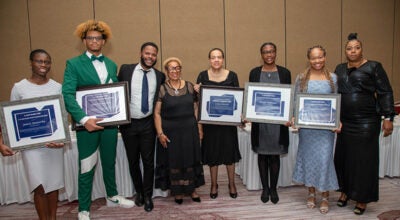School board sets CIP priorities
Published 12:56 pm Thursday, December 31, 2020
|
Getting your Trinity Audio player ready...
|
After a three-month extension to get feedback from the facilities study, the Suffolk School Board came to a consensus on its priorities for projects in its Capital Improvements Plan.
It agreed at its December meeting that it would focus on a bevy of capital improvements to HVAC systems, roofs, stormwater drains and other infrastructure, and among its schools, would focus on those highlighted as having the most needs based on a draft of a facilities study that is expected to be revealed later in January at a joint meeting of the board and City Council. However, the board agreed to ask for money for a new John F. Kennedy Middle School and an addition to Northern Shores Elementary School in the same years — fiscal years 2023 and 2024.
And it also agreed to tackle two major projects per year, rather than one, as a way to accelerate making long-needed improvements.
In the last five years, Suffolk Public Schools has performed more than $12.3 million in work to its heating, ventilation and air conditioning systems at seven schools,
“I think we’ve done a very good job with that,” said Terry Napier, director of facilities and planning for Suffolk Public Schools. “We’ve got a long way to go.”
Napier said there is nearly $6.7 million worth of HVAC work to be done at six schools, and another $14.9 million in work to roofs at six elementary schools, three middle schools and Turlington Woods — all but one of those are at least 20 years old.
Beyond the capital replacements and hazardous materials management, completing Phase 2 of the Mount Zion operations facility and completely closing the Freeney Avenue facility is next on the list of capital projects.
Among the schools at the head of the line to be replaced are John F. Kennedy and Forest Glen middle schools, ones rated in poor condition by the consultants performing the division’s facilities study, RRMM Architects of Chesapeake, followed by Elephant’s Fork Elementary School.
Though Elephant’s Fork is not rated as being in as poor a condition as John Yeates Middle School, it has 13 mobile units that are more than 25 years old. The board also agreed that rather than a new northern end high school, that there should be an addition to Nansemond River High School to account for increased enrollment, given that growth projections for the school division show an increase of less than 700 students in the next 10 years.
Though improvements to Northern Shores Elementary School are a lower priority on the CIP, Vice Chairwoman Dr. Judith Brooks-Buck advocated for them, saying that the addition for the school is needed. She said the city has already allocated nearly $13 money for the school in fiscal year 2023 and 2024.
“With this already being budgeted, and then it being put back, and then it being pushed back, and now being pushed back again,” Brooks-Buck said, “I’m just afraid that we’re not going to get another chance at this. And it’s not that I don’t understand the other schools are in worse shape.
“I’m one of the biggest mouths talking about the other schools and what we need. I’m not saying that at all. I’m just afraid of this not reappearing anytime soon.”
Board member Sherri Story said she agreed with Brooks-Buck about the need at Northern Shores, which is using its available space. She said the addition was approved, “then ignored, in my opinion.” She wants to keep the priority for a two-story addition to Northern Shores where it is from the city’s CIP, to be completed in fiscal years 2023 and 2024.
“If that’s been budgeted, then leave it there, build it and ask for whatever else you want above that,” Story said.
Napier said he does not disagree on the need at Northern Shores. However, the facilities study identified fewer needs there than at Elephant’s Fork. Both schools have 13 mobile units, but Elephant’s Fork is not in as good a condition, he said.
The facilities study used something called a facility condition index to determine what schools are in the worst shape.
“We’re using the FCI index, we’re using the overall cost that it really takes to repair, because we’re putting a Band-Aid on some of these things,” said Superintendent Dr. John B. Gordon III, adding, “we’re not looking for renovations of any schools. We’re looking for replacements. Fifty years is the threshold. That’s going to be my advice to the board. Fifty years is the threshold for the lifespan of the school, and that is it.”
Gordon noted that there is preventive maintenance that takes place yearly at schools, and said the $1 million it originally received from the city for preventive maintenance was not enough. He said thanks to former City Manager Patrick Roberts and the rest of council, they increased it to $3.5 million for the next two years.
However, Gordon said with the nearly $15 million needed for HVAC and roof replacements, the school division has asked for the amount to be increased from $3.5 million to $6 million — two-year cycles of $6 million, two-year cycles of $8 million and two-year cycles of $10 million.
“We are also expecting some revenue shortfalls from the city,” Gordon said. “I want to be fair to the city because we know they also have other needs. However, we also know that schools are the prime reasons (why) people move to the city.”
Though he also cautioned against trying for multiple big-ticket projects in the same year, he later said he appreciated the board’s aggressive approach to wanting to deal with its various school infrastructure issues.
Brooks-Buck said that the board also needs to ask the city for the money the division needs. While the city hasn’t indicated it would give the division the other money, it has with Northern Shores, she said.
“I want it left in place,” Brooks-Buck said. “Now they can say they’re not going to give it to us, but it won’t be because we didn’t ask for it.”
Gordon said the board has the flexibility to determine its priorities.
“I don’t want the board to believe that if we don’t spend the money that we’re going to lose it,” Gordon said. “We’re going to work with the city to reallocate it to these projects. And that’s really going to be the board’s desire and choice as we move forward.”
Board member Tyron Riddick recommended that the division build a new school on land it already has, citing Booker T. Washington Elementary School and Mack Benn Jr. Elementary School.
“John Yeates is big enough to build a new school on the existing location,” Riddick said. “Land in northern Suffolk is expensive.”
Riddick said he also wants to stop using smaller numbers for capacities at schools. While it depends on available money, he said the division has to look at future growth and consider consolidating schools temporarily.
He said John F. Kennedy is in a good location, but just needs “to build the land up,” rather than move it.
Napier said the topography of John F. Kennedy makes it impossible to leave students in the school and rebuild it at the current location. The land can be raised, he said, but the building has to come down first, and there is nowhere to send students during the rebuild. Riddick said he would favor relocating John F. Kennedy students.
Gordon, however, cautioned that building a new school on the site of an existing one increases costs because it has to be done in phases while students are still in the building, and that the division provided the costs to relocate the school “because it’s always better to be under budget than over budget.”
Riddick said that in order for the board to solve overcrowding issues, that rezoning may have to be an option. Something else he said “rings very true” for Gordon.
“When we do build these schools, it’s going to be my recommendation that elementary schools have a capacity of 750 (people), middle schools 1,000 and if we ever have to build a high school it will be 2,000,” Gordon said. “We will use that threshold, and then the goal will also be to be able to save both the city and the school division money to use prototypes for each.”






